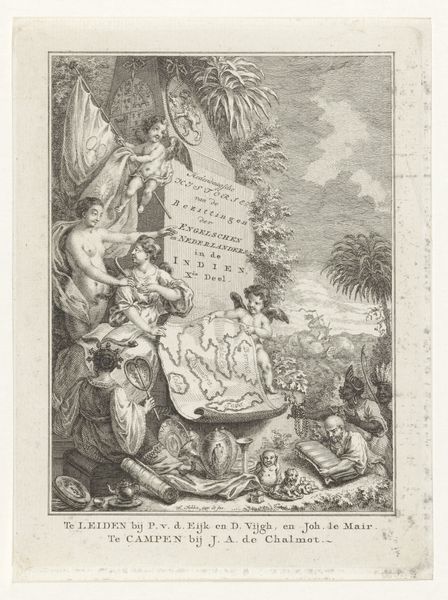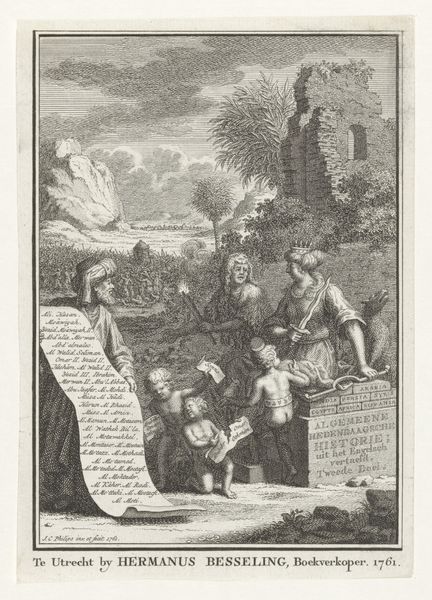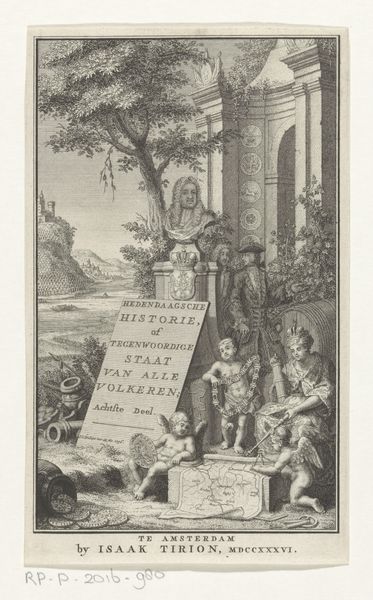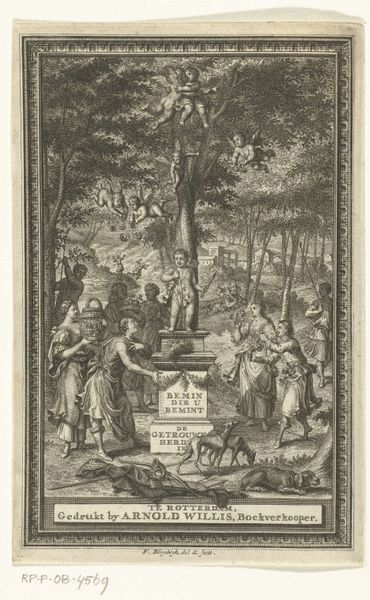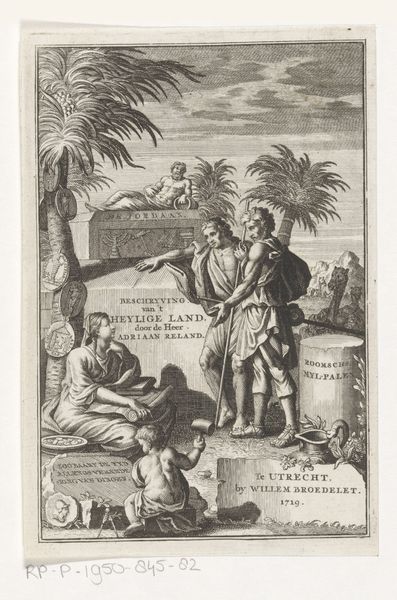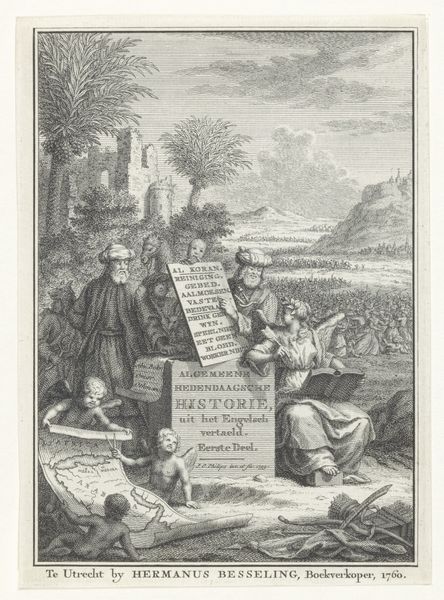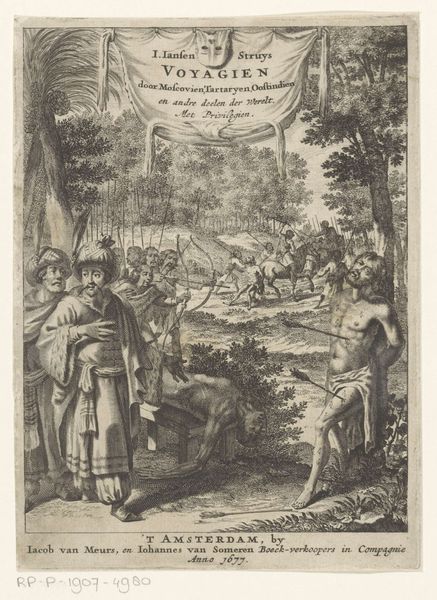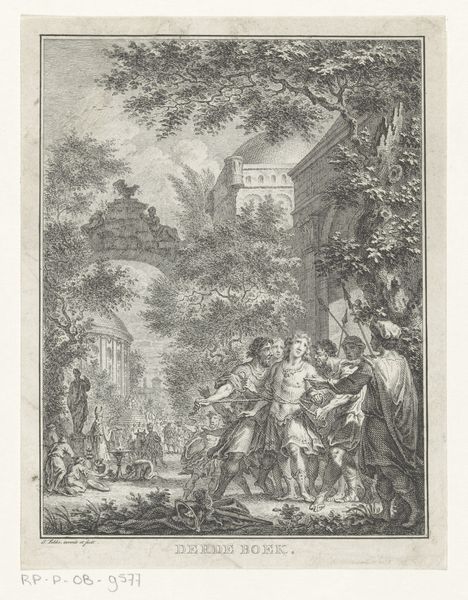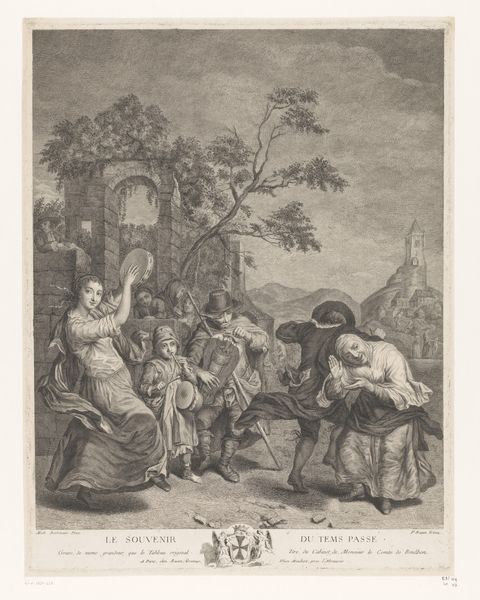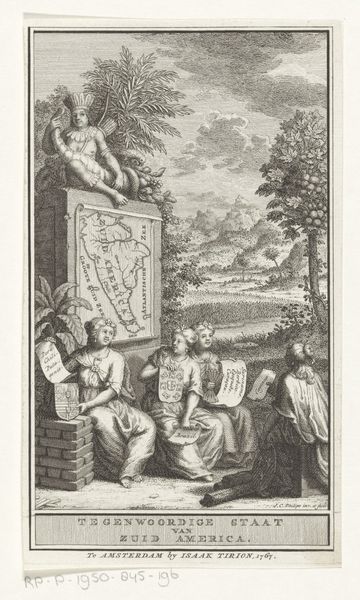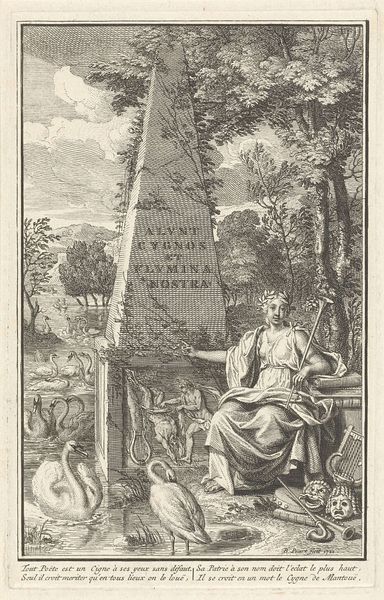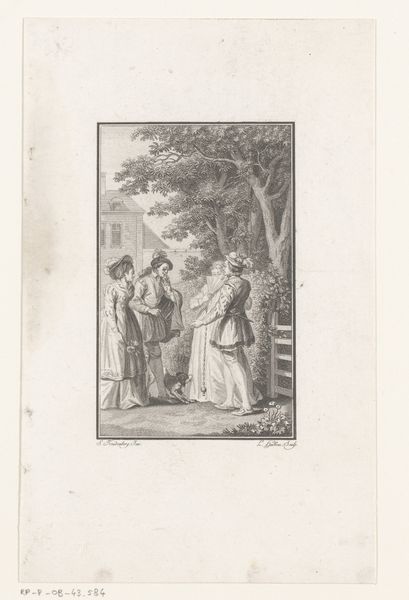
Dimensions: height 173 mm, width 123 mm
Copyright: Rijks Museum: Open Domain
This engraving, Allegory on a Part of Asia, was crafted by Jan Caspar Philips in the 18th century. It presents a tableau rich with symbolic gestures, designed to encapsulate the essence of a continent then still partially veiled in mystery for Europeans. Note the serpent slithering at the lower left; it is a motif as old as time. Here, it might signify the untamed, exotic allure of Asia, echoing the Edenic serpent and its promise of forbidden knowledge. This primal symbol has recurred throughout art history, from ancient Mesopotamian depictions to Renaissance allegories, each time reborn with new layers of meaning, yet invariably tethered to notions of temptation and transformation. The presentation of the draped cloth by the cherubic figure hints at hidden treasures and untold stories. It engages the viewer on a subconscious level, tapping into a collective memory of exploration and discovery. This evokes a sense of wonder, inviting viewers to project their aspirations and fears onto the unknown. Such symbols resurface throughout history, each cycle enriching their significance.
Comments
No comments
Be the first to comment and join the conversation on the ultimate creative platform.
